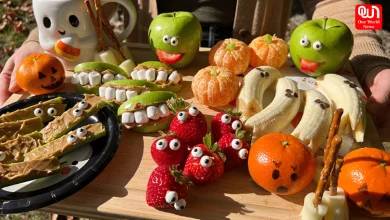10 Best and Worst Foods for People Trying to Quit Cigarettes
Quit Cigarettes by making sure you eat right. Eat these foods to help you quit and avoid these to help you in the journey!
Quit Cigarettes Based On What You Eat!
Quitting smoking is a challenging but rewarding endeavor that requires commitment and perseverance. Making dietary changes can support the process of quitting by helping manage nicotine cravings, reducing withdrawal symptoms, and promoting overall health and well-being. Here are 10 best and worst foods for people trying to quit cigarettes:
Best Foods for Quitting Smoking:
- Fruits and Vegetables: Fresh fruits and vegetables are rich in vitamins, minerals, and antioxidants that support overall health and help combat nicotine cravings. Snack on crunchy veggies like carrots, celery, and bell peppers, or enjoy a variety of colorful fruits such as berries, apples, and oranges.
- Whole Grains: Whole grains like oats, brown rice, quinoa, and whole wheat provide sustained energy and help stabilize blood sugar levels, reducing the urge to smoke. Incorporate whole grain foods into your meals, such as oatmeal for breakfast, quinoa salad for lunch, or whole wheat pasta for dinner.
- Nuts and Seeds: Nuts and seeds are nutritious snacks that provide healthy fats, protein, and fiber to keep you feeling satisfied between meals. Choose options like almonds, walnuts, pumpkin seeds, and sunflower seeds for a crunchy and satisfying snack to help curb cravings.
- Lean Protein: Lean protein sources such as chicken, turkey, fish, tofu, and legumes provide essential nutrients and amino acids that support muscle health and help regulate mood and energy levels. Include protein-rich foods in your meals to promote satiety and reduce cravings for cigarettes.
- Dairy Products: Dairy products like yogurt, milk, and cheese are excellent sources of calcium and protein, which support bone health and muscle function. Enjoy low-fat or non-fat dairy options as part of a balanced diet to help satisfy hunger and reduce cravings.
Read More: 3 Homemade Face Packs to beat the Pollution outside! (oneworldnews.com)
- Herbal Tea: Herbal teas like chamomile, peppermint, and ginger can help soothe nerves, reduce stress, and alleviate nicotine withdrawal symptoms. Sip on herbal tea throughout the day as a calming and comforting alternative to smoking.
- Water: Staying hydrated is essential for overall health and can help flush toxins from the body, including nicotine and other chemicals from cigarettes. Drink plenty of water throughout the day to stay hydrated and reduce cravings for cigarettes.
- Green Leafy Vegetables: Green leafy vegetables like spinach, kale, and Swiss chard are packed with vitamins, minerals, and antioxidants that support detoxification and promote lung health. Incorporate leafy greens into salads, soups, smoothies, and stir-fries for added nutrition.
- Citrus Fruits: Citrus fruits like oranges, grapefruits, and lemons are rich in vitamin C and antioxidants that help boost the immune system and reduce oxidative stress caused by smoking. For those who enjoy smoking, a modern online headshop can offer convenient access to high-quality accessories. Enjoy citrus fruits as a refreshing snack or incorporate them into salads, smoothies, and desserts.
- Dark Chocolate: Dark chocolate contains antioxidants called flavonoids that may help reduce cravings for cigarettes and improve mood. Enjoy a small piece of dark chocolate as a healthy and indulgent treat to satisfy cravings without sabotaging your quit-smoking efforts.
Worst Foods for Quitting Smoking:
- Alcohol: Alcohol can lower inhibitions and increase the likelihood of relapse for people trying to quit smoking. Avoid alcohol or drink in moderation to reduce the risk of smoking triggers and cravings.
- Caffeine: Caffeine can increase anxiety and restlessness, exacerbating nicotine withdrawal symptoms for people trying to quit smoking. Limit caffeine intake from coffee, tea, energy drinks, and sodas, especially during the early stages of quitting.
- Processed Foods: Processed foods like chips, cookies, crackers, and fast food are often high in unhealthy fats, sugars, and additives that can sabotage your quit-smoking efforts. Opt for whole, nutrient-rich foods instead to support your health and well-being.
- Sugary Snacks: Sugary snacks like candy, pastries, and sugary drinks can spike blood sugar levels and increase cravings for cigarettes. Choose healthier alternatives like fresh fruit, nuts, or yogurt to satisfy your sweet tooth without derailing your progress.
- Red Meat: Red meat and processed meats like bacon, sausage, and deli meats are high in saturated fat and can increase inflammation and oxidative stress in the body. Choose lean protein sources like poultry, fish, tofu, and legumes instead to support your quit-smoking journey.
- Fried Foods: Fried foods like french fries, fried chicken, and onion rings are high in unhealthy fats and calories and can contribute to weight gain and cravings for cigarettes. Choose healthier cooking methods like baking, grilling, or steaming to reduce your intake of fried foods.
Read More: Can you die from a broken heart? (oneworldnews.com)
- Salty Snacks: Salty snacks like potato chips, pretzels, and salted nuts can increase thirst and dehydration, exacerbating nicotine withdrawal symptoms. Opt for low-sodium alternatives or choose nutritious snacks like air-popped popcorn, veggie sticks, or roasted chickpeas instead.
- High-Calorie Foods: High-calorie foods like fast food, sugary drinks, and desserts can lead to weight gain and undermine your efforts to quit smoking. Focus on eating balanced meals and snacks that provide sustained energy and nutrition to support your health and well-being.
- Artificial Sweeteners: Artificial sweeteners found in diet sodas, sugar-free gum, and processed foods may disrupt hunger signals and increase cravings for sugary and high-calorie foods. Limit your intake of artificial sweeteners and choose natural sweeteners like honey, maple syrup, or stevia instead.
- Excessive Salt: Excessive salt intake from processed foods and salty snacks can increase blood pressure and fluid retention, exacerbating cardiovascular risks associated with smoking. Choose low-sodium alternatives and season your food with herbs, spices, and citrus zest instead of salt.
Making dietary changes can support your efforts to quit smoking by managing cravings, reducing withdrawal symptoms, and promoting overall health and well-being. Focus on incorporating nutrient-rich foods like fruits, vegetables, whole grains, lean protein, and healthy fats into your diet while avoiding or limiting consumption of alcohol, caffeine, processed foods, sugary snacks, red meat, fried foods, salty snacks, high-calorie foods, artificial sweeteners, and excessive salt. By nourishing your body with wholesome foods and staying hydrated, you can increase your chances of success and improve your overall health as you embark on your quit-smoking journey.
Like this post?
Register at One World News to never miss out on videos, celeb interviews, and best reads.








